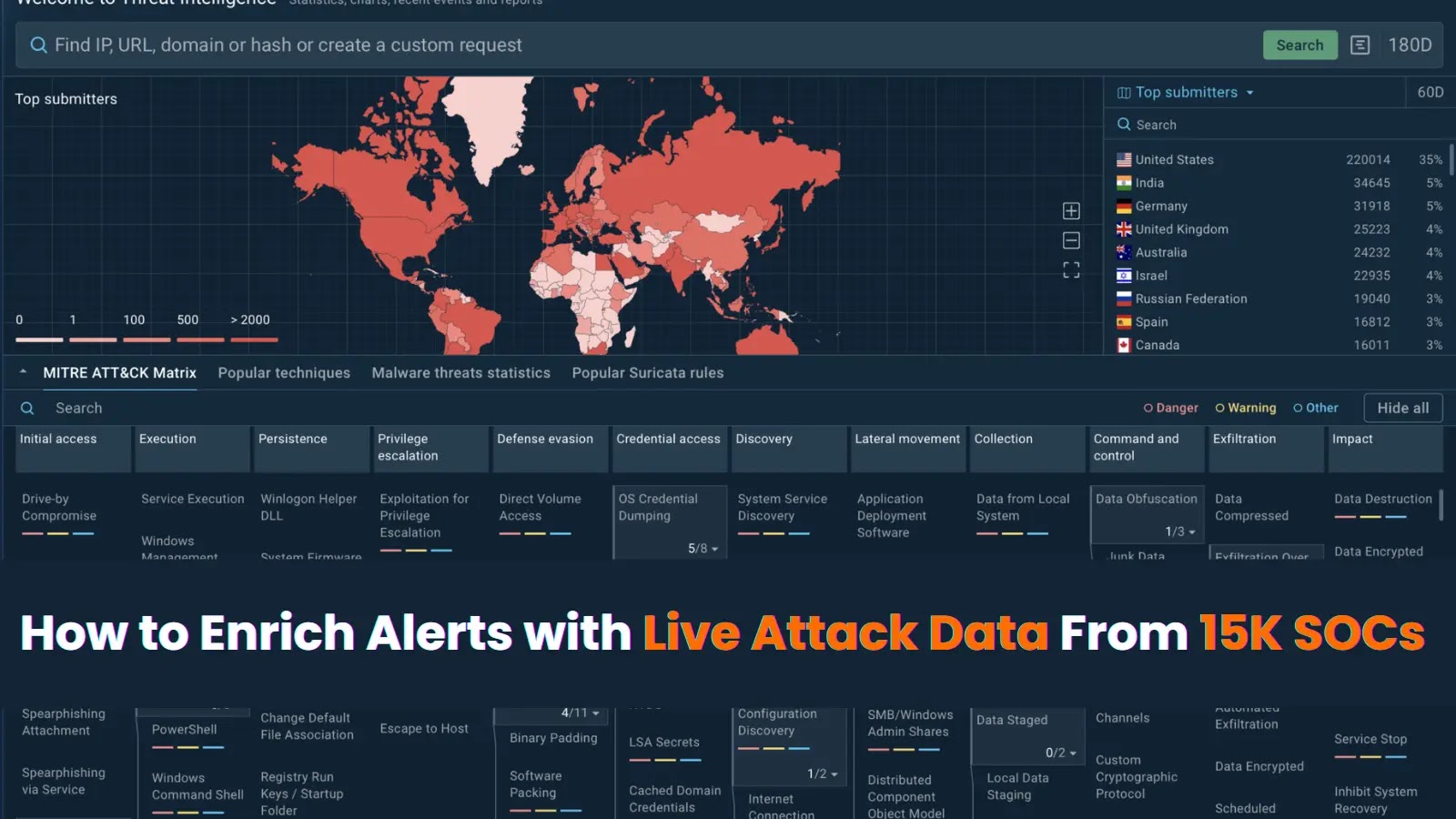
How to Enrich Alerts with Live Attack Data From 15K SOCs
Every SOC analyst confronts a daily deluge of alerts. Your Security Information and Event Management (SIEM) system tirelessly churns out hundreds, often thousands, of notifications. Each one screams for attention, yet resources are finite, and time, a precious commodity. How do you effectively prioritize? How do you discern the critical signal from the overwhelming noise? Investigating each alert in isolation isn’t just inefficient; it leaves security teams reactive, perpetually overwhelmed, and critically vulnerable to sophisticated attacks expertly camouflaged within the background static.
The Alert Triage Dilemma: Drowning in Data, Thirsty for Insight
The core problem isn’t a lack of data; it’s a lack of actionable context. An alert indicating a suspicious login from an unusual geographic location is interesting, but what if ten similar alerts pop up within an hour? Is it a true threat, or a legitimate remote worker on vacation? Without additional context, each alert represents a time sink, pulling analysts away from proactive threat hunting and strategic security enhancements. This “alert fatigue” is a recognized challenge, leading to missed threats and burnout.
Beyond Static Signatures: The Power of Live Attack Data Integration
The solution lies in enriching these alerts with dynamic, real-time threat intelligence. Imagine an alert for a suspicious executable, immediately cross-referenced against live attack data from a vast network of Security Operations Centers (SOCs). This isn’t just about static blacklists; it’s about understanding current, active attack campaigns, tools, and methodologies observed across a global community. This live data provides immediate context, allowing analysts to:
- Prioritize True Positives: If an IP address or file hash associated with your alert is actively involved in confirmed breaches at other organizations, its urgency skyrockets.
- Identify Emerging Threats: Gain early warning of novel attack techniques before they are widely known or signatured.
- Accelerate Investigation: With enriched context, analysts spend less time sifting through logs and more time understanding the scope and impact of an incident.
- Shift from Reactive to Proactive: Understand attacker tactics, techniques, and procedures (TTPs) in real-time, enabling proactive defenses.
How 15,000 SOCs Contribute to Collective Defense
The concept of leveraging threat intelligence from thousands of SOCs isn’t just theory; it’s a powerful model for collective cybersecurity defense. By pooling observed attack data – anonymized and aggregated, of course – organizations gain an unprecedented panoramic view of the global threat landscape. This shared intelligence fosters a community where the collective experience mitigates individual blind spots. When one SOC detects a new piece of malware, its characteristics can be immediately disseminated, protecting others before they become victims. This collaborative approach significantly strengthens the overall security posture of all participating entities.
Key Benefits of Alert Enrichment with Live Intelligence
- Reduced Mean Time To Detect (MTTD) and Respond (MTTR): Faster identification and remediation of actual threats.
- Enhanced Accuracy: Fewer false positives or benign alerts demanding extensive investigation.
- Improved Analyst Efficiency: Free up valuable analyst time for high-value activities like threat hunting and security posture improvement.
- Proactive Defense Capabilities: Anticipate and prevent attacks by understanding evolving adversary techniques.
- Greater Situational Awareness: A comprehensive understanding of current and emerging threats relevant to your organization.
Remediation Actions: Implementing Enriched Alerting
Transitioning to an enriched alerting model requires strategic planning and implementation. Here are key actions:
- Integrate Threat Intelligence Platforms (TIPs): Choose a TIP that aggregates data from diverse sources, including community-driven or commercial feeds featuring live attack data. Ensure it integrates seamlessly with your SIEM.
- Automate Enrichment Workflows: Configure your SIEM or Security Orchestration, Automation, and Response (SOAR) platform to automatically query threat intelligence sources when a new alert is generated. For example, if your SIEM flags a file as potentially malicious, an automated workflow should consult multiple intelligence feeds for further context.
- Define Enrichment Criteria: Determine what data points within an alert are most valuable for enrichment (e.g., IP addresses, domain names, file hashes, user agents).
- Develop Contextual Playbooks: Create specific playbooks for alerts that are highly enriched by live attack data. These playbooks should guide analysts through immediate prioritization and investigation steps.
- Train Your Analysts: Ensure your security team understands how to interpret enriched alerts and leverage the new context for faster, more effective triage and response.
- Participate in Threat Sharing Communities: Where appropriate and secure, contribute your anonymized threat data to collaborative platforms. This strengthens the collective defense for everyone.
Conclusion: From Overwhelmed to Empowered
The relentless volume of security alerts is a constant challenge for SOCs. However, by enriching these alerts with live attack data derived from the collective experience of thousands of fellow SOCs, organizations can transform their security operations. This shift moves teams from a state of being overwhelmed and reactive to one of empowerment and proactive defense. It enables faster, more accurate threat detection and response, ultimately safeguarding critical assets against an ever-evolving threat landscape.





